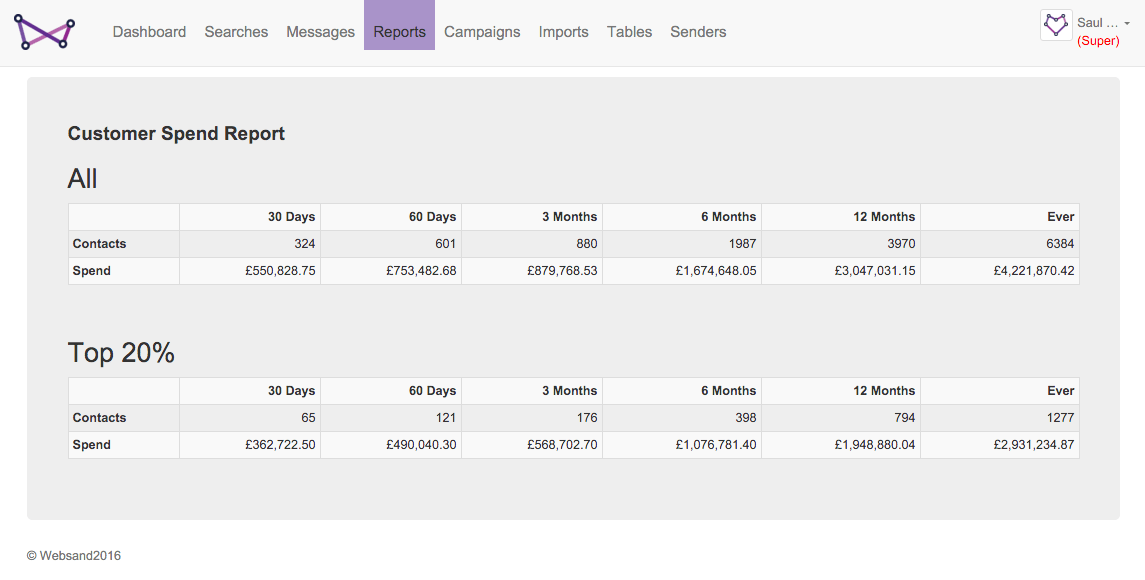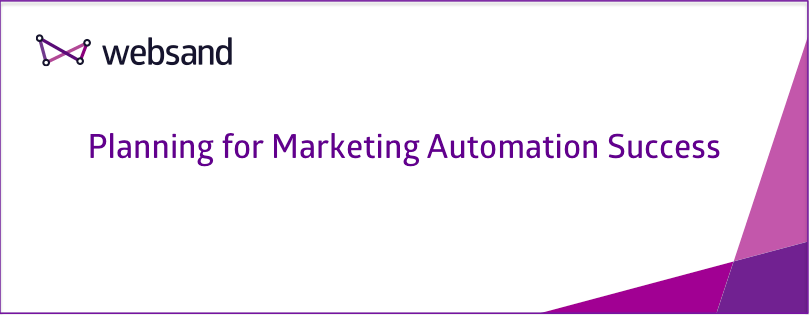Thinking Differently about Marketing Automation
For Marketing Automation, like most most things in business, without a plan it’s difficult to succeed. And planning is absolutely key for marketing automation success.
As a marketer and you are used to planning. If you are using PPC or SEO, you need to plan for that. If you are generating any kind of marketing campaign – it needs a plan.
Marketing Automation is a data driven activity. It operates like a PPC campaign targeted at your customers. However the really great thing is that unlike PPC, you are in full control
In the same way, that you need to generate a keyword plan for a PPC or SEO process, for your Marketing Automation plan you need to define the audience and the behaviour route you’d like them to follow.
Once you get started and put a few marketing automation campaigns are in place, the (ahem) automation bit of marketing automation kicks in and then like a train following a track. Your marketing will react to your plan, and best of all unlike SEO or PPC you’ll be in complete control.
Getting started can take time, defining the plan is 80% of the effort. It’s effort well spent. You’ll get that time and effort back and then some. Deeper customer engagement, more sales and a working process saves you heaps of your invaluable time.
Marketing Automation is a different way of using email marketing.
The thing is that marketing automation might use email as an end result, but it’s a very different way of creating and using email campaigns.
It’s not a one shot weekly newsletter, where you load the data, create the message, and then send.
A data driven approach, strategic and highly personalised to each communication.
It’s create the message, manage the audience, create the campaign / marketing process / automation workflow (or whatever you choose to call the process).
Once that’s in place, it’s in place until you change it, and it will send messages when the audience behaviour meets the criteria of your campaign.
All of this means you will be sending less email – but it will be in context to your marketing plan and highly targeted to each audience member. Overall you’ll get more from it, with less work and that can be a challenge to get used to.
So you need to think differently, and you need to start simple.
To borrow an old phrase, putting Marketing Automation into your business can be like eating an Elephant. It’s really hard to eat an Elephant in one go, and the best way to eat an elephant is one bit at a time.
You need to pick a single place to start, the audience that you believe can generate the most value for your business and develop your marketing automation plan (and expertise) from that point.
Start with your customers and the value they add
We believe the best place to start is with what you’ve already achieved, and that means your customers. More specifically, managing your customers based on their recency, frequency and spend.
To explain further…
Recency – when did that customer last spend with you?
Frequency – how many times has that customer spent with you?
Spend – how much money has that customer spent with you? What is their customer lifetime value
So when helping a client build a marketing automation plan, that’s where we start.
Upload the data into Websand and create a map such as the customer recency, frequency, spend report featured below.

Providing an analytical overview of performance based on the value and activity of your individual customers over the past 12 months. For everyone and for that 20% that tend to follow the 80/20 rule and create the most revenue for you.
Reviewing that map will help you to understand where to start and add the most value to your business.
If you find that the majority of your customers aren’t generating repeat business – then building a customer retention process is the best place to start.
If you’d like ensure loyalty, perhaps you put in some additional benefits to surprise and delight those customers that are spending the most with you.
In the report above, I’d be recommending to start with the top 20% spending customers that haven’t spent with you for six months.
Putting your Marketing Automation Plan in Action.
Once you’ve picked where you want to start, it’s time to create your marketing automation campaign.
As part of the planning, you’ve already got the audience defined. Create a customer group and ensure that your audience always meets the strategic criteria for the marketing campaign.
Then create your email marketing message (the same way as you would for a newsletter).
And then finally, create your marketing automation campaign – select the audience, select the message, define which time of the day you want the campaign to be active, and if your campaign is time sensitive define the date range for your campaign.
Marketing Automation Success that’s as easy as 1-2-3
That 1-2-3 of Marketing Automation is how we do it using Websand.
We built Websand to make the process of marketing automation easier. Allowing smaller businesses and savvy email marketers to take advantage of the data they collect everyday. To create marketing messages that would help them rapidly grow their business. All without a 12 week training process, a degree in statistics and a huge marketing investment.
Obviously, Websand focuses on the process, but it’s always best to create a plan for your marketing automation before you start.
Let’s plan for your Marketing Automation Success?
We can help and you’ll have more engaged customers and more sales in no time. So let’s get started, sign up or book a session by clicking here.
